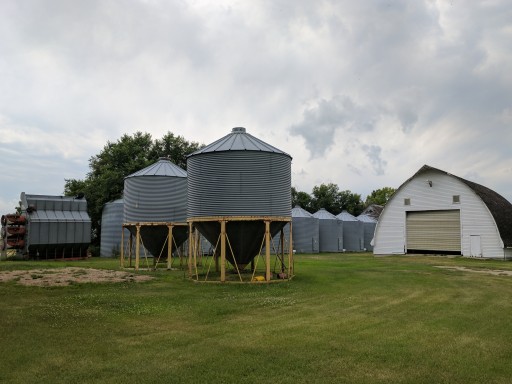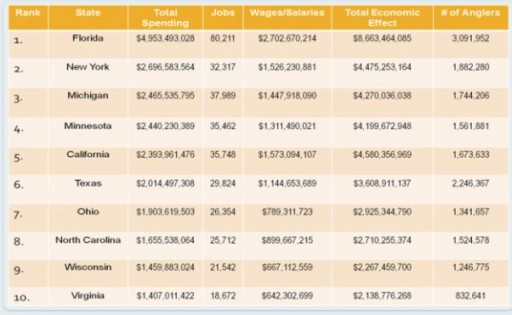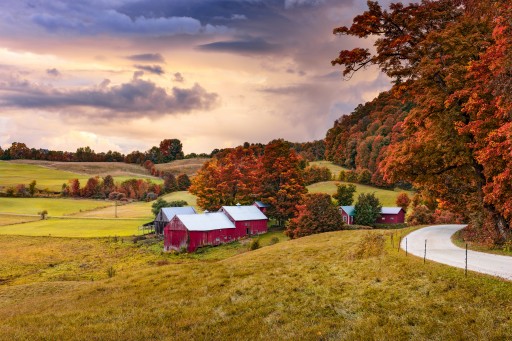Our Blog
At TSWRural, our blogs serve more than one function. We introduce timely industry news that is relevant to our clients and the rural market, we post items we find interesting and compelling, and we give you a glimpse of our corporate culture. We take the business aspects of what we do very seriously, but we like to have fun too.
2.2 million farms cover America’s rural landscape and 99% of those farms are owned and operated by families, individuals, family partnerships or family corporations. One U.S. farm feeds 165 people annually in the U.S. and abroad.
U.S. Farming and Agriculture directly contributed $136.7 billion in 2015. Although there is a direct influence on GDP, there is more to be said about farming. Forestry, fishing, and related activities; food, beverages, and tobacco products; textiles, apparel, and leather products; food and beverage stores; and food service, eating and drinking places. Each of these activities, stores or services are all supported by U.S. Farming and Agriculture.
As each year passes, the amount of money that goes back into the farmers pocket has declined. The American Farmer only see about $0.16 out of every dollar spent, compared to the $0.31 out of every dollar in 1980. The remainder of the gross profit goes beyond just the farming fences towards wages, materials for production, processing, marketing, transportation, and distribution. Midsize Family Farms have a gross cash farm income between $350,000 and $999,000. Large-scale Farms have a gross cash farm income of $1,000,000 or more.
In 2016, the U.S. total farm expenditure average is $169,035/farm. On average, U.S. farm operations spent the following:
- Feed - $27,092
- Livestock and related expenses - $19,491
- Farm services - $20,319
- Labor - $16,616
Large family farms account for half of the U.S.’s hog production and 2/3 of dairy and high value-crops. Mid-Size and large family farms dominate cotton at 83% and cash grains/soybeans at 74%. Together, small and large farms account for 2/3 of beef production (small farms have cow operations and large farms operate feedlots).
Recreational fishing in the U.S. has created an impressive impact on the economy. 46 million angler-fishers have brought new jobs and had a total economic impact of $115 billion in 2017. $48 billion was generated in retail sales.
More than 800,000 jobs have been created through the manufacturing, sale or provision of tackle and other fishing gear, along with hospitality, and boat builders. The amazing thing about this sport is that people from all parts of the country are participating and traveling just to fish. Check out the stats on these top 10 fishing states!
No matter if you’re fishing in the ocean or a small neighborhood lake, you’re making a positive impact on the economy!
https://www.sportfishingmag.com/recreational-fishing-economy-impact-2017
There's a huge misconception out there that rural consumers are disconnected from the world and don't scroll the Internet for funny cat memes or shop online. Guess what, they do! While Rural Americans don't have as much access to the Internet as their urban neighbors, they still use it just the same. They actually spend about 6 hours a day online- MORE than Urban Americans.
Let's breakdown some facts:
- Rural consumers represent 15% of all internet-driven transactions
- 45% of rural residents go online weekly to make a purchase
- 58% of Americans in rural areas have shopped on marketplaces, 71% at large retailer sites, 39% on web stores or independent boutiques, and 40% at category-specific online stores
Clearly, they're online. But what are they doing? Social media, shopping, finding new products & coupon hunting.
Social Media Usage
58% of rural residents use social networks, their favorites are Facebook & YouTube. Facebook is one they use to connect and engage with friends and share things, while most time spent on YouTube is learning and how-to videos. (Remember, they're a hands-on group who do things themselves!) Rural consumers utilize social media to not only to stay-up-to-date with their friends, but also stay engaged with their favorite brands through: product updates, special promotions, customer service & brand news. It is essential that when marketing to the rural demographic that you don't dismiss social media marketing. Whether that is a companion campaign to run alongside print or OOH placement, or just social media strategy- it's a must to any marketing mix. In fact, 25% of rural consumers are more likely to buy something after seeing an ad on social media. (Hint, hint, give us a call 888-506-6055!)
Paid Search & Display Advertising
Social media is a great way to connect with rural consumers and grow brand awareness. But they can't find your business without an effective paid search or display campaign! It makes it easy for rural consumers to find your brand online or in-store. 47% of rural consumers find new products through online search. Rural shoppers are more inclined to go and shop in-store, but they do their research online before they go. Ensuring your brand is easily accessible through social media and paid search is key for brand discovery with rural shoppers.
Affiliate Program
Everyone. Loves. A. Coupon. Just some quick facts, 40% of rural consumers will go out of their way to get a deal, and 33% use coupons when they shop. So make sure you have a great affiliate program with the top coupon sites that not only align with your brand, but also are visible by your target customer. We know which coupon sites rural consumers shop on, and how to make your marketing message stand out in a sea of savings. 71% of all Americans' purchasing behaviors are ifnluenced by their ability to find a coupon or discount online.
None of these fancy stats or numbers are ones to ignore. The Rural American is key to moving your bottom line and at TSW Rural, we're here to help make that happen. We've got the resources, expertise and experience to reach the highly-desirable rural market.
Drop us a note, or give us a call, we'd love to hear from you!
Phone: (888) 506-6055
Email: contact@tswrural.com
- 65.4% of Rural Americans stay in their birth state.
- Poverty is less common for rural adults and children than it is for urban adults and children.
- Rural Americans empower themselves to be independent, appreciate hard-work, and celebrate their hometown traditions whenever possible.
There are over 60 million Americans living in Rural America in C & D counties. They're a relatively untapped demographic and the perfect audience for the home improvement market. But why you ask? First, let's dive into some of the demographic information.
C County
Gender: 52.7% Female, 47.3% Male
Average age: 50 years old
Percentage homeowner: 72%
Single-family homes: 104 index (above average)
Multi-dwelling units: 81 index (below average)
D County
Gender: 50.2% Female, 49.8% Male
Average age: 57 years old
Percentage Homeowner: 77%
Single-family homes: 98 index (average)
Multi-dwelling units: 59 index (below average)
Home Improvement Statistics
Over the past two years, rural households have reported over 21,141 projects while urban households have reported only 8,742 projects. Projects consist of things like:
Systems & Equipment: Plumbing & pipes, electrical systems, plumbing fixtures, HVAC and other appliances or major equipment
Remodeling: Kitchen and bathroom
Room Additions and Renovations: Kitchen, bathroom, bedroom and recreation room
Exterior Additions & Replacements: Roofing, siding, windows and doors
Other Additions & Replacements: Deck, porch, patio, terrace, detached deck, garage, carport, shed, swimming pool and recreational structure
Homeowners of Rural America
Rural buyers spend on average $133,722 for their home
- Home prices in rural markets are 26% cheaper per square foot than in suburban markets and 56% cheaper than urban markets
Rural markets have the highest homeownership rates in America
- 76% of rural residents own their home, as compared to 50% in urban areas
- Rural homeowners also plant deeper roots than their urban counterparts
- 67% of rural homeowners never plan to sell their home
- 32% of rural homeowners plan to pass their homes on
All these stats tell a story of why home improvement is so important to this rural demographic. C & D county consumers are relatively untapped, very responsive and key to moving the bottom line. TSW Rural has the resources, expertise and experience to reach this exclusive and highly-desirable rural market. Shared Mail Values, a shared mail program run through TSWRural, offers retailers and major brands a unique opportunity to reach these customers in a cost effective- yet responsive way. To capitalize on this print program, Shared Mail Values also offers companion digital options through social media and affiliate options to create a multi-layered marketing campaign designed to drive results.
In addition to Shared Mail Values, TSWRural offers various marketing services to promote your brand through social media, affiliate, paid search, television and more. Give us a shout to see what TSWRural can do to grow your business!






